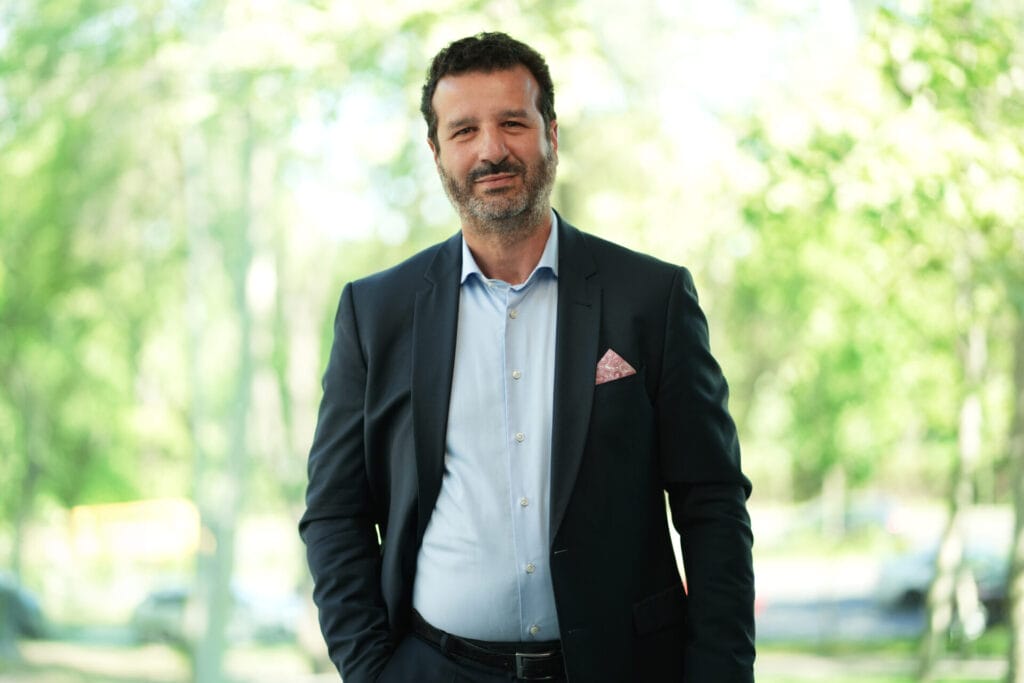Daylight is an important parameter in the energy design of a building. In a windowless house where lighting is solely artificial, the total energy consumption would be about 5 times higher.
A natural lighting system utilises direct sunlight, diffused by clouds or reflected by the surrounding environment, for the daytime illumination of buildings. When used properly, daylight can reduce energy consumption for lighting by 16-20%.
It has been scientifically proven that natural lighting can increase workplace productivity by up to 18% and improve students’ performance in schools by 5-14%, among many other benefits.
What does a natural lighting system represent? Is it already a model in other countries, and is it already in Romania?
A natural lighting system utilises direct sunlight, diffused by clouds or reflected by the surrounding environment, for the daytime illumination of buildings. When properly utilised, daylight can reduce energy consumption for lighting by 16-20%, influence the heating/cooling load, and is essential for the health and well-being of occupants. Natural lighting can increase workplace productivity by up to 18% and improve students’ performance in schools by 5-14%, while in retail stores, sales can increase by 15-40%. Additionally, access to windows with views of the outside environment can improve cognitive function and memory by 10-25% and reduce hospitalisation time by 8.5%.

It has been found that natural light is the most potent regulator of the circadian rhythm or biological clock. Through receptors in the retina, natural light generates signals in the brain that align internal rhythms with external ones. This is why we tend to be active during the day and sleep at night. To maximise these effects, it is recommended to be exposed to as much cool natural light, from the blue spectrum, in the early part of the day, immediately after waking up. Adequate light levels during the day also promote the secretion of cortisol, which influences energy levels, and serotonin, which influences mood. In the absence of light, the secretion of melatonin, which induces sleep, is favoured. When exposure to natural light is neglected, it can adversely affect daily activities and even mental health. Currently, conditions such as depression and Alzheimer’s are closely correlated with the amount of time people spend in the presence of natural light. It has been found that light inhibits the onset of depression and is often used to alleviate a specific type of seasonal depression that occurs in the colder seasons.
In the design of the lighting system, consideration must be given to the purpose of the room, the activities that will take place, the time of day, and the age of the occupants. According to current regulations, for residential buildings, the values of the natural light factor (for winter solstice with overcast sky) can vary from 0.4% (16 lx) for hallways and bathrooms to 1.5% (60 lx) for kitchens. Additionally, the uniformity factor must be at least 0.65% for study rooms or offices and can go as low as 0.1% for circulation spaces. Windows should be sized according to the room dimensions. For living rooms, the window area should range from 16.6% to 12.5% of the floor area, and for other rooms, it should range from 12.5% to 10%.
The quality of natural lighting is also a mandatory criterion for all building sustainability certifications. The light factor is the most commonly used indicator, but often aspects related to glare prevention methods, illumination levels, or accessibility to exterior views are also taken into account. According to the LEED (Leadership in Energy and Environmental Design) standard, the accepted lighting level should range from 270 lx to 5400 lx, while for BREEM (Building Research Establishment Environmental Assessment Methodology), the lighting factor should be at least 2% for 80% of the floor area, and for LBC (Living Building Challenge), access to exterior views should be provided for 75% of the occupied space.
Is it a vital step in the design and construction of a new home? What can we do in an already constructed home to improve natural lighting?
The quantity and quality of natural light indoors primarily depend on the orientation and size of windows, as well as the properties of the glass used.
Windows placed on the north facade will provide diffuse, comfortable, and consistent light throughout the day. Windows on the south, east, or west will allow for more direct light with significant variations in intensity throughout the day. Often, these windows require the integration of shading systems to prevent excessive heat gain when not desired or to prevent glare.
Rooms facing north often require artificial lighting even during the daytime for certain activities. To increase the amount of light indoors, another good option is the installation of skylights where feasible. Under similar conditions, skylights provide at least twice as much light as vertical windows of the same size and three times more light than dormer windows. Additionally, skylights offer a greater variation in light levels, which increases the visual interest of the space and reduces the risk of glare.
The amount of light entering a room is also influenced by the type of glass used. In general, double-glazed windows block about 20% of light transmission, while triple-glazed windows block about 30%. Coloured or coated glass can reduce light transmission by up to 80%, altering the spectral quality of light and the perception of colours indoors.
To increase the amount of light in existing buildings, it is recommended to use light-coloured walls, as well as light-coloured tiles and ceramics in bathrooms, to promote light reflections and brighter rooms. Mirrors can be used to direct light into the darkest corners, creating a sense of brightness and a visually expanded space. Additionally, transparent or semi-opaque glass doors allow light to pass from one room to another, helping to even out the lighting levels.
The amount of light that penetrates indoors can be controlled using curtains or drapes. To minimise light obstruction, thin materials in lighter colours are recommended, or the use of horizontal blinds that direct direct light toward the ceiling, allowing for uniform diffusion throughout the room, thus improving lighting quality and reducing glare.
In cases where windows cannot provide the optimal amount of natural light or window installation is not feasible, systems can be installed to capture external light and transport it into the building through light tubes or fibre optics.
For light tubes, proper orientation of the light receiver is essential to maximise the amount of direct light received. The receiver can be placed on the roof or the facade, and the entire system needs to be planned during the design phase. The length of the tube can influence the amount of light transported indoors, but good performance can be achieved within a distance of up to 6 metres.
In fibre optic transport systems, light can be carried for distances of up to 100 metres without losing quality or intensity. Such systems utilise intelligent collectors that track the sun’s position throughout the day to maximise light capture. They also have the advantage of being installed on existing buildings.
Such systems can be crucial in reducing energy consumption for lighting during the day. In the case of an office building, electricity used for artificial lighting can account for up to 30% of total CO2 emissions.
To be inserted: https://www.youtube.com/watch?v=eflcbj2lpWo
The impact of this system on energy efficiency – with or without heat gain (statistics and potential savings)
Daylight is an important parameter in the energy design of a building. In a house without windows where lighting is solely artificial, the total energy consumption would be about 5 times higher.
The orientation of glazed surfaces towards the south is a fundamental principle in passive house design to reduce the energy required for heating during the winter. To maximise the solar heat gain, materials with good thermal properties can be used to store heat during the day and release it at night. In the summer, heat gain can be reduced by using an exterior shading system for better efficiency or by positioning windows correctly to allow direct light to enter the interior during the winter when the angle between the sun and the horizon is lower, but not during the summer when the sun is higher in the sky.
An important aspect regarding glazed surfaces is that they do not provide the same level of thermal insulation as exterior walls, resulting in higher heat losses through these surfaces. For this reason, the sizing of windows should find a balance between heat gain during the day and heat losses during the night.
The parameters of glass that determine heat gain are the solar heat gain coefficient (SHGC) and the U-value. The SHGC refers to the glass’s ability to allow the passage of UV rays, and the higher it is, the more it heats up the room. The U-value represents the thermal transmittance of the material, measured in W/(m2K), and the lower the U-value, the better the material insulates.
Both the SHGC and U-value depend on the climate in which we live. The Passive House Institute defines formulas to calculate the ranges and maximum values for each type of climate.
The U-value should be as low as possible in any climate, but the maximum limits are lower in climates with low or extremely high temperatures. In these cases, where the temperature difference between the exterior and interior is greater, more energy is needed to maintain the desired temperature, making better insulation even more important.
On the other hand, the SHGC has specific ranges depending on each climate because solar heat gain is only desirable when we want to heat the building.

We can illustrate through three specific cases:
Alaska – Arctic climate with extremely low temperatures. In this case, the solar heat gain coefficient (SHGC) needs to be higher to heat the building from the sun throughout the year and reduce dependence on active heating methods. The windows essentially act as passive heaters. For example, a Passivhaus-certified house in Alaska used an SHGC value of 0.6.
Dubai – hot arid climate. In this extreme climate, we want to block solar heat gain as much as possible, not only with a low SHGC but also with a permanent shading system. For the EFdeN Signature prototype house, which participated in the Solar Decathlon Middle East 2018 competition in Dubai, the glass used had an SHGC value of 0.28.
Romania – temperate continental climate. In this case, a mix is needed. During winter, we want to benefit from solar heat gain like in Alaska, but during summer, we want to avoid excessive solar heat gain to prevent overheating. Thus, the SHGC should be suitable, lower than Alaska but higher than Dubai. For the EFdeN VATRA prototype house built for the Solar Decathlon Europe 21/22 competition in Wuppertal, Germany, a climate similar to Romania, the SHGC value was 0.38.
The lighting in our homes matters and can make a difference
In conclusion, natural lighting is a vital aspect for our health and well-being. By wisely using natural light in the design and arrangement of our homes and buildings, we can benefit from multiple advantages, such as reducing electricity consumption, improving our performance and cognitive state, and protecting the environment. Let’s be aware of the importance and benefits of natural lighting and strive to integrate it as much as possible into our daily lives.

Flavia Nacu
Engineer & Coordinator of the Monitoring and Comfort Conditions Department at EFdeN VATRA. One of the things I am most proud of is being an EFdeN Volunteer. I enjoy getting involved in projects that have a positive impact on the society we live in and can bring about change. I am passionate about sustainability and the environment, and I believe it is our duty to always consider nature in our day-to-day decision-making, so that we can achieve long-term benefits for both ourselves and the environment.
Article first published on InfoClima















